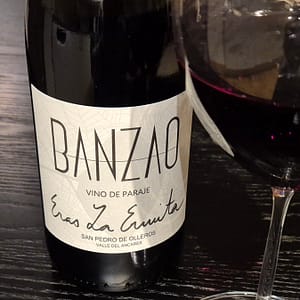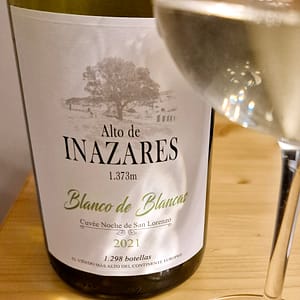To make the history short, Silvia Marrao from Madrid became interested in winemaking in Italy and fell in love with the vineyards of Bierzo after having spent some time in Rías Baixas. Her Banzao project began with the lease of a old 3 hectare vineyard in San Pedro de Olleros in 2017, located at 750 meters of elevation. We are in the in the Ancares valley, in El Bierzo. A banzao is a small, temporary dam that raises river or stream levels to channel water for irrigation. Made of wood and stone, it washes away with autumn rains, only to be rebuilt yearly -as Silvia puts it, mirroring the natural cycle, like the vine’s renewal through winter pruning.
Silvia has currently around four hectares of her own vineyards, thanks to private owners in San Pedro de Olleros who came to offer them to her. Currently is cultivated on a total of 18 plots in 8 different parajes in the Villa de San Pedro de Olleros. These have different orientation, altitude and type of soil. Being in the Ancares Leoneses Biosphere Reserve, she wants to work organic, integrating the plant into the biodiversity of the area and intervening as little as possible.
Eras la Ermita is one of Silvia’s 5 paraje wines. It’s from a vineyard of mainly mencía planted in the 1940s and 50s and been in recovery since 2017. The soil is slate with clay and quartzite. The wine was fermented with native yeasts in barrels and stainless steel tanks, 50% with stems and the rest gently destemmed without crushing. It was aged for 9 months in 500 and 225 liter barrels.
It is a fairly large field at the northern edge of San Pedro, gently sloping toward the city. Over time, the wind has eroded its loose soil, leaving a thin topsoil. Quarry stone and weathered slate define both the terrain and the character of the wine.

Eras la Ermita 2021 (Bodegas Banzao)
Deep clear red. Aromas of dark forest berries and raspberries, aromatic herbs, with an earthy note. The palate follows up with dark and red fruits, together with a stony minerality, and it has a good concentration and a lovely integrated acidity. It’s in a way delicate and juicy, but it also has a firm tannins that will help it through a few more years. It’s a wine with real nerve and energy.
Price: Medium
Leave a Comment













